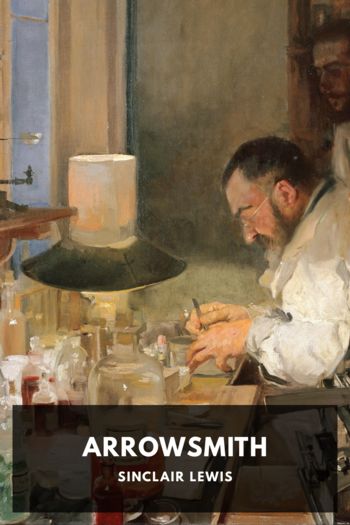Holocaust: The Nazi Persecution and Murder of the Jews, Peter Longerich [essential books to read TXT] 📗

- Author: Peter Longerich
Book online «Holocaust: The Nazi Persecution and Murder of the Jews, Peter Longerich [essential books to read TXT] 📗». Author Peter Longerich
Laws had been introduced and ‘eugenic’ measures had been introduced for certain
sectors of the population such policies had become state-sanctioned. Suspending
the principle of political equality for all citizens and introducing the certification
of Aryan ancestry in various areas of public life makes it clear how far the social
status of every individual was affected by the influence of racial politics.
What I intend to explore here is the relationship between the exclusion of Jews
and other minorities and the implementation of National Socialist rule on the
basis of a number of examples: the transformation of ‘social politics’, which was
mutated into ‘National Socialist welfare provision’ via the exclusion of Jews and
others; the effects of removing Jews from German schools on education policy and
its National Socialist remodelling; the consequences of the dominance of racially
inspired approaches in the areas of science; and the National Socialists’ usurpation
of the cultural life of the country, including important areas of everyday culture.
The Exclusion of Jews in Need from Social Policy
and its Transformation into National Socialist
‘Welfare Provision’
Jewish community welfare services in National Socialist Germany were faced with
the problem of having to help an ever-increasing number of impoverished, ageing
people, who were progressively being neglected by the state’s social services
systems.
Interim Conclusions
73
In summer 1935, many local authorities were beginning to discriminate
against the members of the Jewish population who were in need of support
in favour of other clienteles. Jews were also excluded from the ‘Winter
Relief Organization of the German People’ that was essentially run on
voluntary lines. Here as in other areas of public life, however, the author-
ities could not proceed arbitrarily: even the Nuremberg Laws did not
fundamentally alter the claims of Jewish Germans for social contributions
from the state. 1
After the end of 1935 Jewish welfare agencies were compelled by numer-
ous municipalities to declare the sums they disbursed for support and the
public agencies began by deducting these from the state provision. From
the same period Jews were increasingly excluded from certain special
measures and donations that were not specifically stipulated by law.
After 1936 Jews were treated separately from others in need of welfare
support, with counters set aside for them in social security offices or
accommodation in segregated refuge homes. And social security support
was cut.
This all happened not because of any intensification in legal measures for
persecution but because the welfare agencies in the local authorities devoted
considerable imagination and energy to the development of ever newer and
different ways to discriminate against Jews in receipt of support. 2 The German Council of Municipalities (Deutscher Gemeindetag) played an
important role in this process of cumulative exclusion; it was used to control
and standardize community policies in the 64,000 German municipalities. At
a meeting of the Council of Municipalities in June 1937 there was general
agreement that such practices be brought into line across the country and,
according to one suggestion, Jews should be equated with foreigners when it
came to welfare provision. 3 During the following year cities and the Council of Municipalities would come up with a series of new measures for further
discriminating against Jews who were in need of support. 4 After the November 1938 pogrom these initiatives were to culminate in an order from the Reich
Ministry of the Interior that provided for the complete exclusion of Jews from
public welfare provision. 5
Discrimination against Jews in need, as well as similar measures against
Gypsies and ‘asocials’, 6 contributed significantly to changing the character of social policy as a whole. It was transformed into ‘National Socialist Welfare
Provision’. Here, unlike in traditional social policy, it was no longer a
question of meeting individual needs and supporting the socially disadvan-
taged; at the centre was the idea that the support of individuals would be
made dependent on the assessment of their value for the racially defined
‘national community’. The exclusion of the racially ‘inferior’ was a key
constitutive element of this policy. 7
74
Racial Persecution, 1933–1939
The Exclusion of Jews from the German Health System
and the Implementation of the Racial Hygiene
Paradigm in Medicine
During the period of National Socialist dictatorship ‘racial hygiene’ conceptions
that had been represented by a minority of members of the medical professions
since the Imperial age became definitive. 8 In close collaboration with jurists, educationalists, social scientists, and members of the social security network,
doctors collaborated under the Nazis with population policies that were aimed
at preventing the bearers of ‘negative’ hereditary characteristics from reproducing.
This was initially achieved via counselling on hereditary health issues, bans on
certain marriages and enforced sterilization; during the war it was pursued via the
systematic murder of those defined as ‘racially inferior’. 9 The ‘elimination’ of these
‘negative’ elements within the German population was regarded as a major
contribution towards the convalescence of the ‘body of the nation’.
According to the view of racial hygienists, it was important to slow down the
‘degeneration’ of the population but not only by preventing certain groups from
reproducing. The key difference between this and traditional notions of eugenics
was that racial hygiene attempted to put an end to ‘racial miscegenation’, which
was seen as particularly damaging, a flashpoint of the first importance for the
health of the nation.
In this vein, in a speech to the Reich Party Conference of 1935 the head of the
Reich Doctors’ Association, Gerhard Wagner, emphasized how ‘increasing mis-
cegenation with Jewish blood that is entirely alien to us’ would not only have ‘the
direst consequences, because it . . . is against the natural order’, but this ‘bastard-
ization’ with the Jews, ‘a people who are already bastardized’, might lead to the
unhindered spread amongst the German population ‘of the hereditary diseases
and negative dispositions that are already widespread amongst Jews’. 10
Racial hygiene not only proclaimed the struggle against ‘racial miscegenation’
but saw as a significant goal the complete exclusion of Jews from the health
system; indeed this was a fundamental condition for the implementation of its
ideas. This was not merely a question of excluding Jewish doctors and other
medical professionals, 11 or the gradual exclusion12 of Jewish patients from public health organizations, but above all it was manifested in the battle against so-called
‘Jewish medicine’, which was a synonym for those tendencies in modern medicine
that resisted the triumphal progress of racial hygiene. Above all this meant
medicine that was ‘mechanical’ or ‘industrial’ or concerned with





Comments (0)